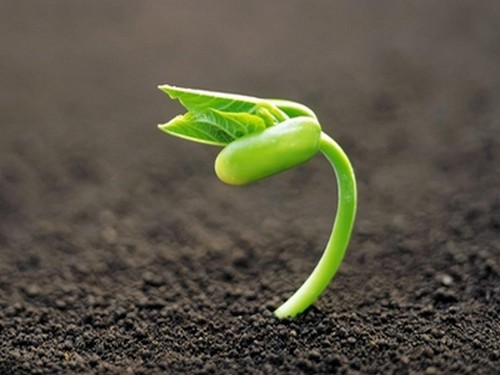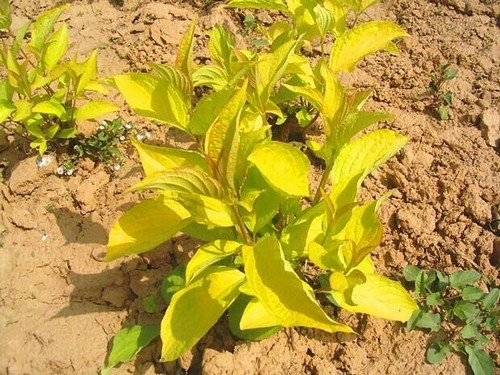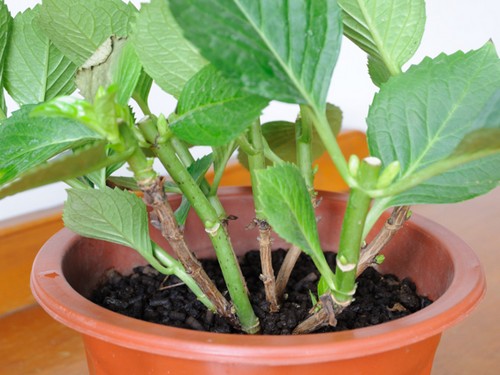The Propagation method of Hydrangea
Hydrangea is a common flower plant, also known as eight Immortals, Ziyang Flower, Hydrangea and so on. It is native to Sichuan and Japan in China. It is a deciduous shrub of the genus Saxifragaceae (scientific name: Hydrangea). The flowers are almost asexual, and the so-called "flowers" are just sepals. There are white, blue, pink, purple, pink and other colors, its umbrella, such as snowballs, surrounded by oval green leaves, is very good-looking, is a very important summer flowers and trees, can be planted everywhere, so what are the breeding methods of hydrangea?

Hydrangea can be propagated by split-plant method, strip-pressing method and cutting method, but generally adopt cutting method.
Cutting propagation:
For cuttings in early spring, one-year-old ungerminated branches can be used as cuttings, and new branches of the same year can be used as cuttings from May to August. The cuttings are about 10 cm long and have 2-3 nodes. The cutting substrate is plain sand or vermiculite. After planting in early spring, it is necessary to keep warm and maintain a certain humidity; after cutting from May to August, shade and moisturizing should be carried out, put in the shade, spray water frequently, and keep the substrate moist. After about 30 days, it can take root and survive. After taking root, it can be planted in a pot.
During the Meiyu period, the robust twigs on the young mother tree are selected as cuttings. The cuttings need to be jointed at the base of the cuttings and stained with mud, about 20 cm long, and the lower leaves are removed. The suitable temperature of cuttings is 1 3-18 ℃, shade is needed after cutting, it is often kept moist, rooting takes place in about 15 days to 1 month, and can be transplanted in the second year after survival.
Striping propagation:
Striping propagation is carried out with biennial branches before sprouting in early spring. When pressing the strip, it will be partially cut in the human soil, otherwise it is not easy to root. Buried depth 2-3 cm, covered with soil 1 cm, pat compacted, poured through water, covered with plastic film, can take root after 30 days. When the strips are partially exposed, the 3-4 nodes of new branches can be poured with some fertilizer to promote growth. In the spring of the following year, it was cut off from the mother plant and transplanted with soil, and it could blossom in the same year.
Ramet propagation:
Ramet propagation should be carried out before germination in early spring. When ramet, pour out the plant, separate several plants from the root, and plant them separately. Ramet propagation should be carried out before sprouting in early spring. Separate the rooted branches from the mother plant, pot directly, watering should not be too much, maintain in the semi-shady place, wait for new buds to sprout and then transfer to normal maintenance.
Grafting propagation
Grafting propagation is to use Qionghua seedlings as rootstocks, cut in spring, easy to survive. Transplanting should be carried out after defoliation or before budding. The main branch is easy to sprout and grow, and it needs to be pruned properly after flowering to shape the tree.
Time: 2019-06-11 Click:
- Prev

Cuttage Seedling technique of Rhizoma Rubra
The dry stem of Redwood changes from green to yellow in autumn, and gradually thickens to golden yellow with the decrease of air temperature. it is extremely bright and dazzling in the sunlight after snow, the color is the brightest in the side light, and shows a little green in the yellow when it is backlit; cold resistance, drought resistance, wind damage resistance, water humidity resistance, no obvious diseases, adapt to various soil and environmental conditions
- Next

Cutting method of potted eight Immortals / Hydrangea
Hydrangea is poisonous and has five special tastes. Accidental eating can lead to colic, abdominal pain, diarrhea, shortness of breath, vomiting, hematochezia and other toxic symptoms. Therefore, it is better not to put it indoors, nor do you want to pick and play with the beauty of flowers. If the family buys hydrangea potted plants
Related
- Fuxing push coffee new agricultural production and marketing class: lack of small-scale processing plants
- Jujube rice field leisure farm deep ploughing Yilan for five years to create a space for organic food and play
- Nongyu Farm-A trial of organic papaya for brave women with advanced technology
- Four points for attention in the prevention and control of diseases and insect pests of edible fungi
- How to add nutrient solution to Edible Fungi
- Is there any good way to control edible fungus mites?
- Open Inoculation Technology of Edible Fungi
- Is there any clever way to use fertilizer for edible fungus in winter?
- What agents are used to kill the pathogens of edible fungi in the mushroom shed?
- Rapid drying of Edible Fungi

